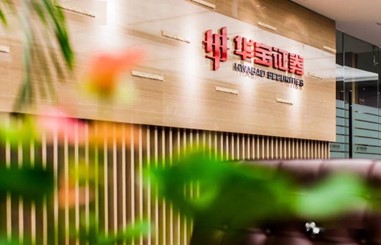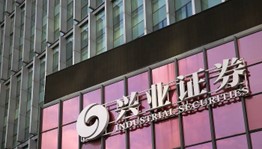My experience as an intern of the Wealth Management Department in Hwabao Securities
In this article, Wenxuan HU (ESSEC Business School, Global BBA, 2021-2023) shares her internship experience as an intern in the Wealth Management Department in Hwabao Securities in China.
The Company
Hwabao Securities is a securities company of China Baowu Steel Group, one of the world’s top 500 companies. With the strong support of shareholders, Hwabao Securities adheres to the business purpose of “creating value for customers, opportunities for employees, returns for shareholders and benefits for society” and continues to provide professional, high-quality and personalized comprehensive financial services for investors.
Logo of Hwabao Securities

Source: Hwabao Securities.
Wealth Management is an important business unit of Hwabao Securities. From 2019 to 2021, approximately 80% of Hwabao Securities’ revenue is derived from wealth management business and securities proprietary business.
Headquarters of Hwabao Securities

Source: Hwabao Securities.
My Internship
My missions
I worked as an intern in the Wealth Management Department of Hwabao Securities. I was mainly responsible for supporting the department staff in business analysis and compliance management.
I coordinated and analyzed the company’s 2021 interim brokerage business operation. In practice, I used the Vlookup function and pivot table, etc. to count the market share of the sales department, business revenue, commission breakdown, etc., and created data visualization charts to report to the company president and other managers in the interim meeting. In addition, I calculated the performance of the marketing staff. Based on their performance I adjusted their rank.
Moreover, I was responsible for investor eligibility management (a review system that requires institutions to Know Your Customer( KYC) and identify the customer’s risk tolerance) and branch compliance training and participated in developing compliance test questions for branch heads. In addition, I created a PowerPoint presentation for the training of new regulations of positive repo risk control and compliance management work report to assist the compliance officer in personnel training. I also assisted the compliance officer in completing the company’s risk compliance management work, preparing and integrating multi-departmental internal control compliance checklists, and formulating branch compliance cross-check work plans. I wrote an article about typical case of compliance to improve the construction work of the company’s compliance system. The article was appreciated by the department manager and the staff of the Shanghai Stock Exchange (SSE).
Required skills and knowledge
The Wealth Management Department is an important department of a financial institution, directly managing all branches and sales staff, and an important line of defense to ensure business compliance. Working in the Wealth Management Department requires less computer skills and mathematical abilities but requires financial knowledge and legal background. Interns are required to keep an eye on changes in market regulations to assess the risk of financial transactions between the company and its clients. Interns also need to have strong communication skills and be willing to give advice to colleagues in different departments. In addition, departmental staff should also have a high level of ethics and self-discipline and adhere to the legal bottom line.
What I have learnt
My internship at Hwabao Securities gave me a good understanding of the composition of the entire financial institution and the operation of the financial market. This experience allowed me to master many financial terms and trading processes and raised my awareness of compliance and the different types of risks related to investments. The knowledge I learned in class was also applied during the internship, such as money and credit, macroeconomics, credit management, bank management, risk management, compliance management, and law.
While writing the article about the revision of SSE’s investor eligibility management regulations, I also found areas where compliance management could be improved. My article was called “Dispute over account opening for the visually impaired – enhancing investor satisfaction with personalized services”. In the article, the investor’s application for online account opening at the company was rejected due to the investor’s visual impairment and the company’s lack of corresponding hardware facilities. In order to effectively protect the rights and interests of vulnerable groups, the company developed a personalized off-site account opening business process applicable to the visually impaired investor. The company took several measures to take care of the physical conditions of special groups while achieving compliance. For example, the company let the investor open the account offline with professional staff, rather than online. To ensure compliance, the company informed the investor of the investment risks in detail and made a recording.
The article was adopted and commended by SSE as China’s management methods for special group investors are not yet perfect. For special groups, under the condition of meeting the requirements of regulatory laws and regulations, providing better and more humane services in a targeted manner can better protect the interests of investors. Actively fulfilling social responsibility can reflect the social responsibility of enterprises.
Three key financial concepts
Here are three useful financial concepts I learned in Wealth Management Department.
Anti-money-laundering
Money laundering is the process by which monetary gains are cleansed from their illegal origins. The money laundering process has three stages and often incorporates an important international dimension: placement, layering, and integration. Financial institutions are often used, wittingly or unwittingly, by criminals in this cleansing process.
For securities firms, there are usually a variety of measures in place to fight money laundering:
- Establish various anti-money laundering systems.
- Establish internal working mechanism, staff with professional personnel and improve operation process.
- Improve business systems to meet the needs of AML work and ensure accurate and efficient information collection.
- Identify customers and reasonably classify and adjust customer risk levels. Strengthen identification and supervision for high-risk customers or accounts.
- Manage customer information, including identity information and transaction records.
- Establish abnormal transaction detection indicators and models to identify large or suspicious transactions.
- Conduct anti-money laundering assessments to provide system-wide risk prevention capabilities.
- Organize anti-money laundering training and strengthen training for personnel in key positions to effectively communicate the latest regulatory requirements.
The Eligibility Management of Investors
The Eligibility Management of Investors is an obligation that sell-side institutions should fulfill for investors. (A sell-side institution is a party that sells its own products or services. Unlike the physical industry, sell-side institution in the financial industry sell virtual products, such as industry research reports, liquidity services, financing services, etc.) The investor eligibility management system was established by the China Securities Regulatory Commission (CSRC) and the China Financial Futures Exchange (CFFEX), taking into account the characteristics of the stock index futures market. The system requires financial institutions to understand their customers, objectively and comprehensively measure their risk appetite and risk-taking ability, and adhere to the principle of “providing the right products to the right investors”. The eligibility obligation was first introduced in the U.S. to regulate misconduct by securities firms. In recent years, the content of the appropriateness obligation has been gradually enriched and improved, and has played an increasingly important role in the trials of Chinese courts at all levels.
The eligibility management of investors has become a direct legal basis for investors to seek remedies in financial disputes. The purpose of investor suitability management is to ensure that customers can make investment decisions and bear the resulting benefits and risks on the basis of a full understanding of the risks of the relevant financial products. In essence, the investor eligibility management system is the investor protection system.
Repurchase Agreement and Reverse Repurchase Agreement
In my internship, I was responsible for compliance training for staff. I produced PowerPoints on the new regulations for Repurchase Agreement risk control.
Repurchase Agreement (Repo) is a transaction in which a party pledges a certain size of bond to raise funds and promises to repurchase the pledged bond at a later date. It is also one of the open market instruments frequently used by The People’s Bank Of China (PBC), which can achieve the effect of repatriating funds from the market by using positive repo operations. Compared with PBC bills, Repurchase Agreement will reduce operating costs, while locking in funds more effectively and reducing liquidity.
Reverse Repurchase Agreement is a transaction in which the PBC purchases marketable securities from a primary dealer and agrees to sell the marketable securities to the primary dealer on a specific date in the future. Reverse Repurchase Agreement is an operation in which the PBC puts liquidity into the market, and the expiration of Reverse Repurchase Agreement is an operation in which the PBC takes back liquidity from the market, called Repurchase Agreement. Simply put, a Reverse Repurchase Agreement is a transaction in which the investor actively lends funds and obtains a bond pledge is called a Reverse Repurchase Agreement transaction, at which time the investor is the financier who accepts the bond pledge and lends the funds.
Related posts on the SimTrade blog
▶ All posts about Professional experiences
▶ Wenxuan HU My internship experience as industry research assistant in Industrial Securities
▶ Alexandre VERLET Classic brain teasers from real-life interviews
Useful resources
The People’s Bank Of China (PBC)
China Securities Regulatory Commission (CSRC)
China Financial Futures Exchange (CFFEX)
About the author
The article was written in October 2022 by Wenxuan HU (ESSEC Business School, Global BBA, 2021-2023).








